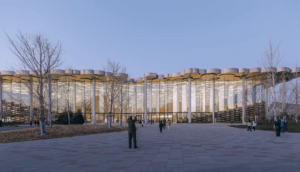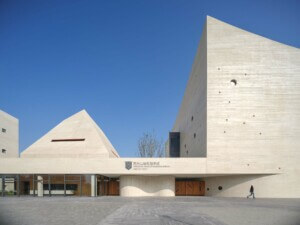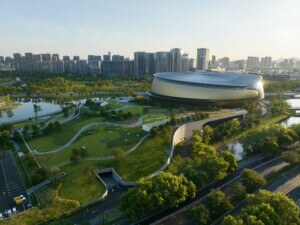Architect: MVRDV
Location: Shenzhen, China
Completion Date: September, 2023
The Rotterdam-based firm MVRDV recently announced the completion of the Shenzhen Women and Children’s Center. The project involved the adaptive reuse of a tower that was originally constructed in 1994, but was never fully occupied due to insufficient fireproofing measures. The tower had been left vacant for years with the plinth of the structure as the only occupiable portion of the original building. The building was listed by China’s National Development and Reform Commission, among 24 other buildings, as a target for revitalization.
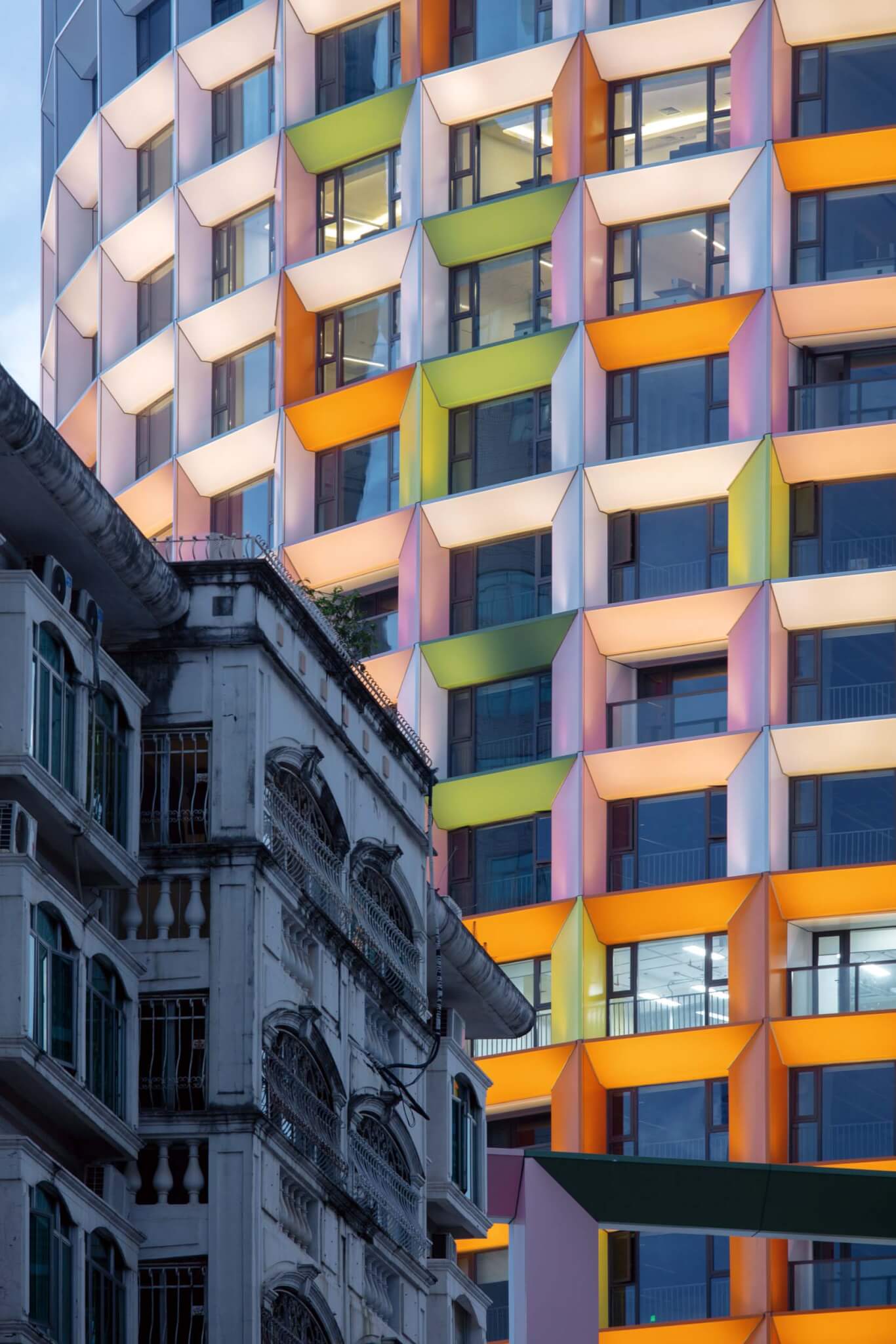
MVRDV’s renovation of the tower involved the installation of a brand new facade system defined by a colorful series of exterior frames that differentiate the building’s disparate sections and functions. The installation increased the depth of the facade by more than 3 feet.
The exterior cladding consists of a dry aluminum system with a fluoropolymer coating. The coating allows for a flush connection to the existing structure, omitting visual eyesores like nails or screws. By implementing a dry installation, the architects enabled future renovations to the tower. The fluoropolymer coating also enhances the vibrancy of color on the window mullions.
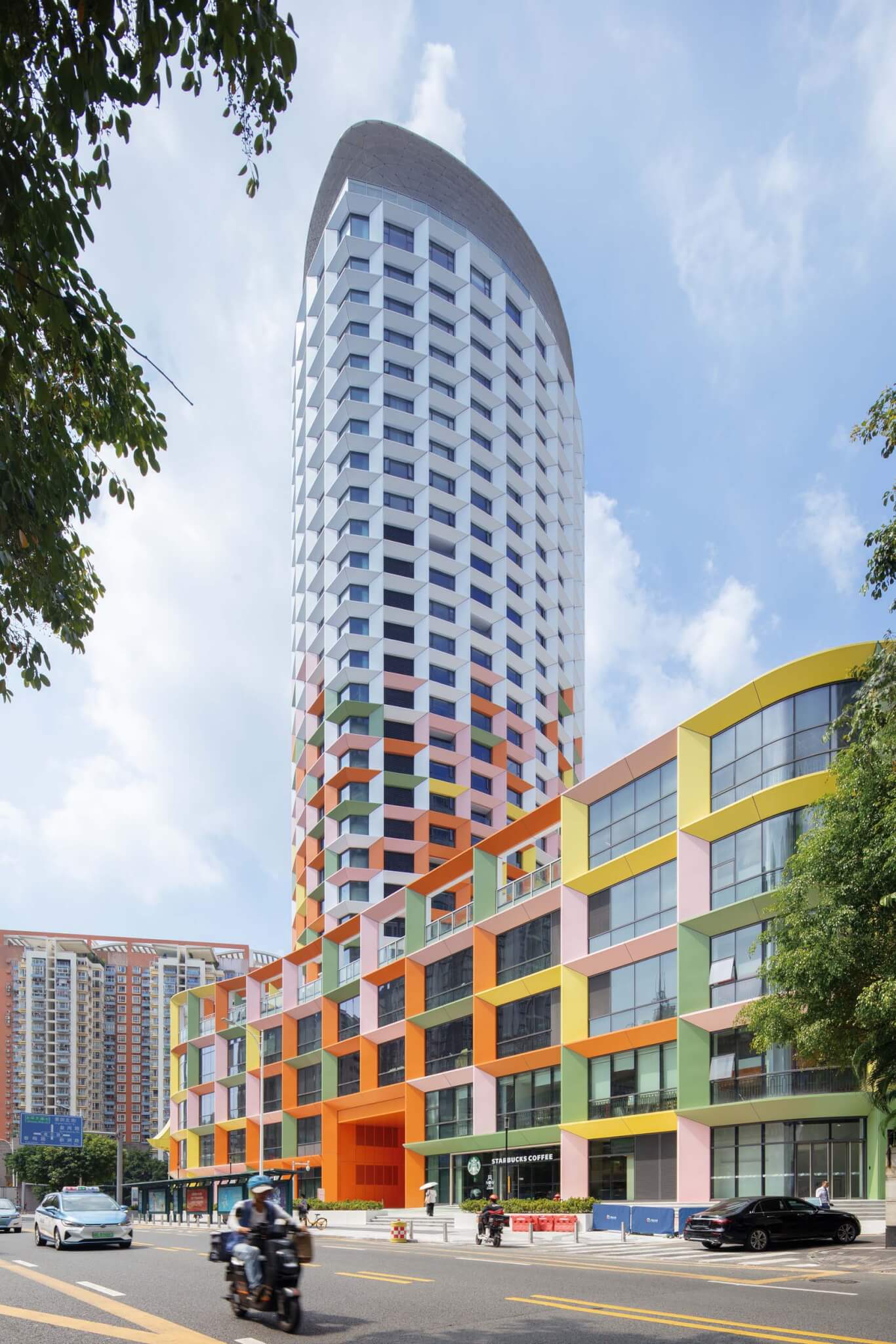
Bright orange, yellow, pink, and green dominate the grid wrapping the plinth and base of the tower. The colors gradually fade to white toward the top of the building. The tower serves as a hotel for at-risk women and children and contains 201 individual rooms. Below the hotel rooms, is a mix of programming, including a library, auditorium, children’s theater, therapy rooms, and office space for staff members.
The coloration of the external panels wrapping the building’s plinth help to differentiate between the building’s separate sections and functions. This is evident in the four entrances to the center, which are colored differently to improve navigability.
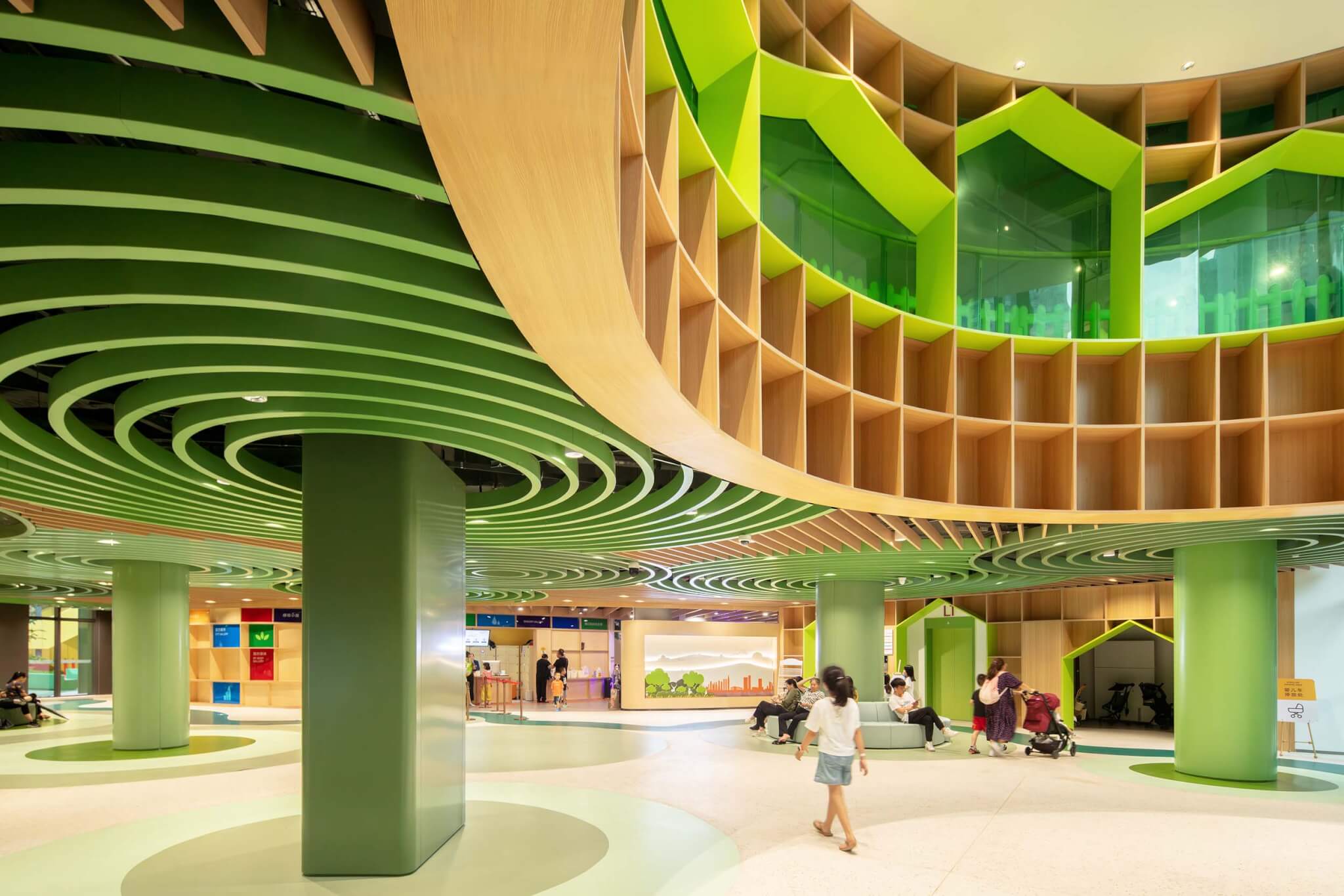
According to MVRDV, “the building sets an important precedent for repurposing buildings in a city that is soon to see a great wave of adaptive reuse.”
By reusing the original structure, nearly 900,000 cubic feet of concrete were preserved. According to the architects, this is “a carbon savings equivalent to 11,800 flights from Amsterdam to Shenzhen.” The renovation is inline with China’s larger goals to achieve peak carbon emissions by 2030, and carbon neutrality by 2060.
The new facade system will help improve the energy performance of the women and children’s center, allowing for additional shading to minimize thermal heat gain, and natural ventilation through newly-installed operable windows. Its natural shading structure reduces the need for cooling.
MVRDV told AN, “Due to the high angle of sun incidence, the generous mullion cantilevers prevent direct irradiation in the summer months, while the energy of the low-lying sun can still be harvested during warmer periods to reduce heating requirements. Through our simulation, we concluded that the deepened facade saves up to 43 percent of solar radiation over the summer.”
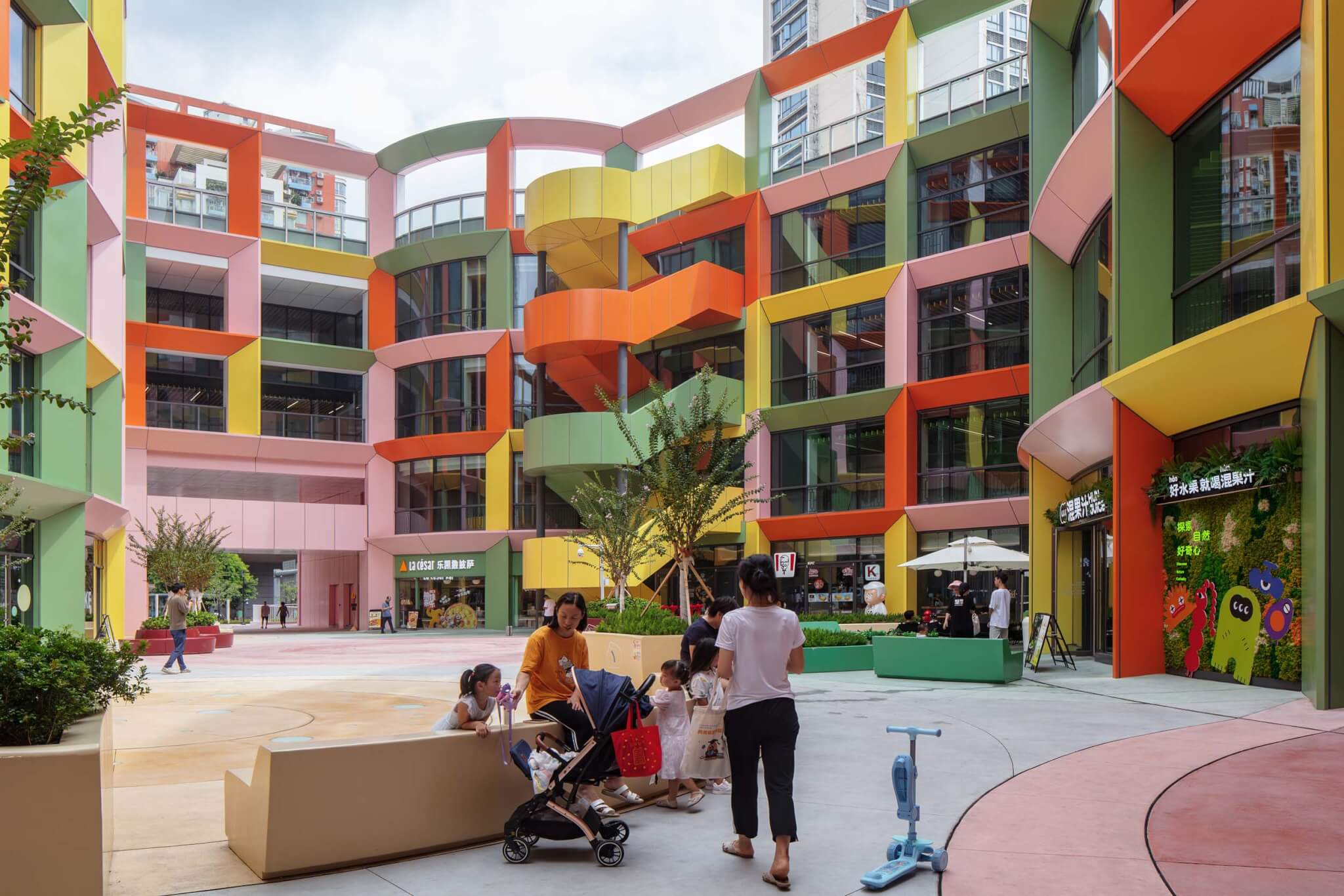
The building was also enhanced with the addition of new amenities such as a rooftop terrace at the crown of the tower which provides occupants with a panoramic view of the cityscape below. At the base of the building, a parking lot has been transformed into a public courtyard. Further additions were implemented to rectify the poor planning and “awkward geometry” of the building’s original design, maximizing the available floor space.
While trying to overcome the limitations of the existing structure, the design team worked to accomplish this while performing as little demolition and reconstruction as possible. The complexity of the floor plate was reduced and unnecessary “nooks and crannies” were eliminated. Very precise interventions to the concrete structure were undertaken to implement these changes.
Also of substantial significance is MVRDV’s efforts to reroute the metro exit, which previously emerged on the sidewalk in front of the tower, to the inside of the building. When it was located outside of the building, the metro exit blocked the main entrance to the building, affecting the accessibility of the site.
The metro exit was rerouted to emerge in the main lobby, which necessitated close collaboration with the municipal authorities. A BIM model was created connecting the designs for the women and children’s center to the public metro system, using georeferenced plans and topographical levels of the existing station.
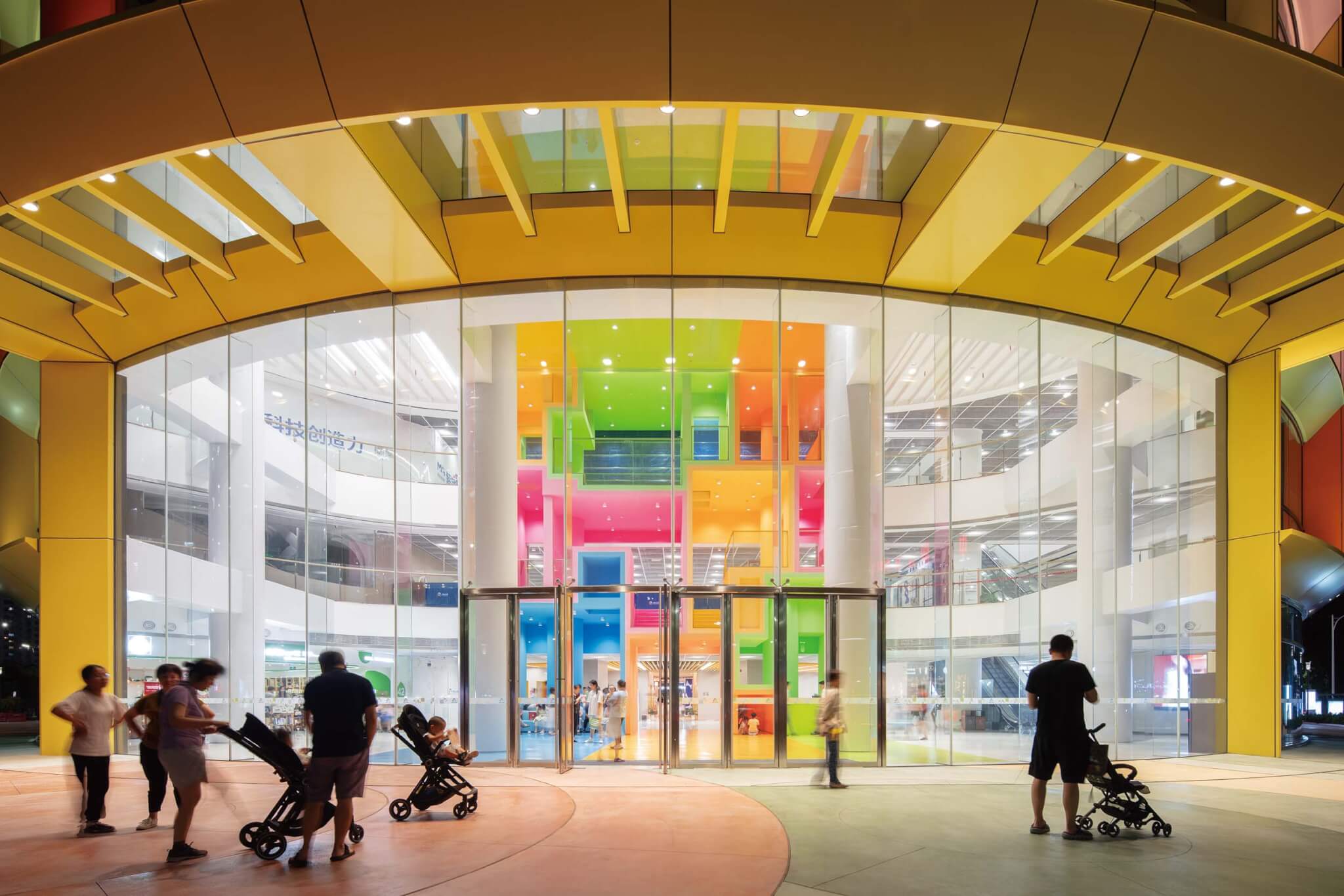
During the design process a number of bureaucratic challenges were overcome. Approval was required not only from public authorities, such as the city of Shenzhen, as well as the Municipal Bureau of Transportation and fire department, but also from private stakeholders such as the developer and the Shenzhen Women’s Federation.
The rerouted metro exit required the construction of a pedestrian tunnel connecting the station to the lobby. To accommodate local code and height requirements, the paving height of the plaza above the tunnel had to be raised. The tunnel also impacted the scope of the plaza’s landscaping, imposing restrictions on the weight of the vegetation and trees planted above the tunnel.
Additional fire safety codes were imposed in the lobby due to the proximity of the metro entrance. This required the implementation of fireproof doors and shutters, which were tastefully disguised and all materials within the lobby were required to have an A-1 level fire rating. This imposed restrictions on the specified materials and furnishings in the interior design of the lobby.
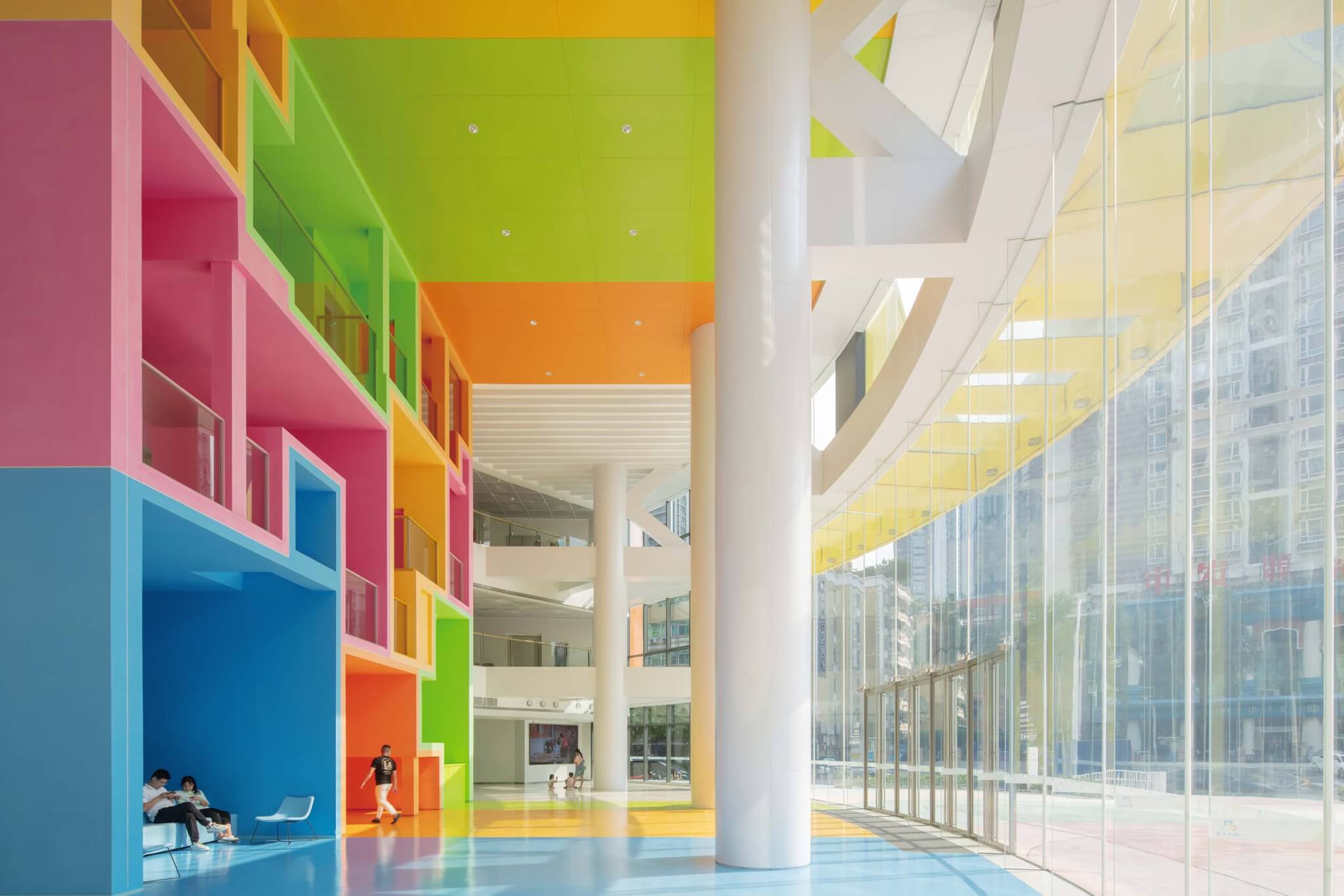
The tower’s plinth serves as a service center for mothers and their children. Within the lobby, nine rooms containing play areas provide entertainment to children during their stay.
MVRDV’s founding partner Jacob van Rijs commented, “The Shenzhen Women and Children’s Centre could be a pioneering project for Shenzhen. With the city’s fast-paced growth, many existing buildings were not really designed to have a long lifespan. That is a recipe for either an epidemic of demolition or, ideally, a great wave of adaptive reuse. Showing that even the most inadequate of these structures can be reused could save a crazy amount of concrete going to landfill – and eliminate millions of tonnes of carbon emissions that would have been created replacing that concrete.”
Project Specifications
-
- Architect: MVRDV
- Co-architect / Landscape Architect / MEP: SZAD
- Project Coordination: Shenzhen Women & Children’s Building Operation and Management
- Facade Consultant: King Glass Engineering
- Structural Engineer: Yuanlizhu Engineering Consultants
- Lighting Consultant: Brandston Partnership
- Cost Calculation: Jinxia Property Cost Consultation
- Interior Architect: Jiang & Associates








